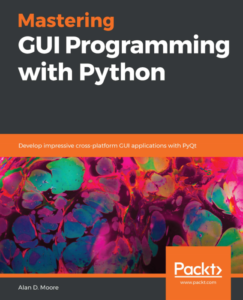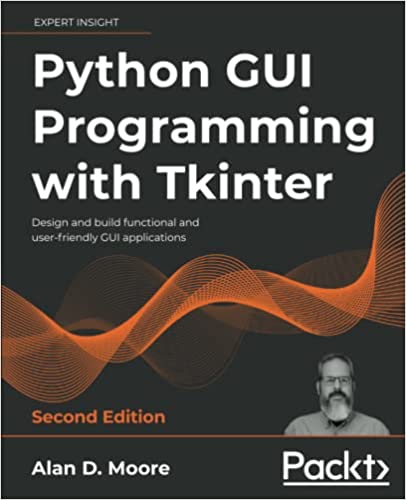As I write this, I should be camping, but the weather had other plans. So I’m hunkered down watching the storm radar and playing with a recent acquisition, the Tascam DP-006.
My kids often question why we go camping. Why leave our soft mattresses, our central heat and air, our refrigerator and streaming video services to sleep on the ground and eat food cooked inexpertly over propane or burning wood? Why trade all these conveniences for the artificial constraints of the campground?
Maybe it’s to build character and stamina for fear that all these luxuries have made us too soft. Maybe we take pleasure in the chance to exercise resourcefulness and creative problem solving. Maybe it’s just to prove we can. And maybe these are the same reasons I acquired a DP-006
I have, of course, a fully-featured DAW system loaded with plugins on which I’ve made a number of pretty decent recordings. I’m not getting rid of that any time soon, but over the last few years I’ve found it harder and harder to finish a recording. Part of it is the complete lack of interest in my music from the wider world, but also there is a sense of option paralysis that comes from working in a fancy DAW. It makes it all to easy to add an effect, add another track, edit these takes, etc.
I also find that working in a DAW becomes a very visual experience. Instead of focusing on what a track sounds like, I focus on what the wave shape looks like. Instead of focusing on whether a groove sounds good, I’m comparing it to the grid and getting worried it’s off-beat. I was hoping to recapture some of the magic of my 8-track reel-to-reel days. So when this item came up for a trade on reddit, I made the swap. My kind of vague goal with the DP is to have a minimalist recording platform to get around the downsides of a DAW and just finish a few songs.
With camping, there’s always a bit of a paradox of how primitive you want to go. And actually enjoying camping comes down to finding the sweet spot between bringing your entire modern world with you (a.k.a. “Glamping”) and subjecting yourself to a weekend of ascetic misery. Likewise with a minimal recording setup, they key is finding that sweet spot of the features you need and nothing more. Does the Tascam DP-006 hit the spot? Let’s see.
Overview
The DP-006 has two mono and two stereo tracks, so depending on how you want to think about tracks it’s either 4 or 6 track (I guess we could say 6 tracks arranged in 4 channels). You can record either two mono or one stereo track at a time, using the 1/4″ jacks on the back or the embedded condenser mics on the front. Each channel has volume and pan controls. The only output is a 1/8″ headphone jack, but you can connect it to a computer with USB to pull out your tracks or mixes. Audio is recorded at 44.1kHz / 16bit and stored to an SD card. The whole unit is smaller than a VHS tape and only slightly large than a Boss pedal and can run on AA batteries.
And that’s about it. Pretty simple unit. No phantom power, no built in effects, automation etc. I put it through the paces by recording a basic instrumental tune on it using drum machine, bass, electric guitar and digital piano.
Working with the unit
Recording a track starts with configuring and assigning your inputs for the track. This requires a little menu diving but isn’t too bad. Once you’ve done that, you arm a track, hold record and hit play. Now you’re recording. Alternatively, you can hit play and later hit record at whatever point you want to start recording.
The transport is very much like a tape transport, with rewind, fast forward, stop, play, and record. It has some handy features like “return to zero” and “return to last recording point” that eliminate some of the tedium of a tape system, but some of the choices made in the software are a little annoying. For example, I can hit “record” during playback to punch in, but hitting “record” again doesn’t stop recording. You apparently have to hit “play” to stop recording. Not a big deal, but contrary to the expectations of this musician who’s been recording on tape and DAWs since the ’90s. I do appreciate that holding rewind or fast forward during playback skips ahead as you hold and continues playback at the new location when you let up. I could do that with a tape unit, but always felt like I was going to break something doing it.
Speaking of punching in and out, this is probably the most fatal weak spot of this unit. The only way to punch in on a track that I’ve found so far is to hit record during playback, at which point it’s immediately recording. Great if you have an assistant, not so great if you’re one person playing an instrument that requires two hands. Unless your part has a sufficient break in which you can punch the button and jump back to the instrument, you’re not getting a clean punch. I was able to work around it for the bass parts by fretting hard for the first note while pushing the button with my right hand, but this is far from ideal.
The unit has the ability to set “in” and “out” points, which are used in mixdown and for the rudimentary editing capabilities. Why they didn’t add an option to use them for punch points I can’t understand. This simple bit of automation seems pretty critical for a unit designed as a personal recording system.
The aforementioned editing capabilities allow you to select a region (using the in and out points) and either delete, insert, or silence the region. No copy and paste though, you’re going to be playing things through each time (hey, that’s probably a good thing anyway). I used these functions to remove an extra measure of drums from the end of one section of the song, and it worked OK. It took a lot of trial and error to find just the right spots for start and end, and even after several tries the cut was a bit sloppy.
Fortunately the DP improves on tape by offering an UNDO function, so botching a punch-in or edit is not the end of the world. This feature seems to be well implemented and worked flawlessly for me.
To get a few more layers than 4 tracks allows, I made use of the bounce feature to combine two guitar tracks down to one stereo track. To do this, you enter Bounce mode, turn up the volume on the tracks you want, turn down the volume on the tracks you don’t want, and start recording. Apparently you can even record over one of the tracks you’re bouncing, which is another nice improvement over tape. This all worked great, although I didn’t realize the inputs were active while bouncing the tracks, so made the mistake of unplugging cable and got some buzz and pop on my bounced track. Live and learn. I guess the benefit of this is that I can record another track while bouncing to add even more layers to the mix. So, that’s kind of cool. Even though the UNDO feature mitigates some risk here, I doubt I’d want to actually do this.
Once I’d manged to record all my tracks, it was time to enter Master Record mode and mix them down. Seeing as I only have volume and pan on each track, there isn’t a lot to do here other than hit record and let it rip, but I did “ride the faders” a little at this point. Once your master is recorded, you need to dig through the menu and export the master recording (which can only be done after switching back to multitrack mode, for reasons I can’t fathom). This took a few minutes, after which I can connect over USB as if it were a regular flash drive and copy out the mix.
I noticed after doing so that my final mix was quite quiet, the loudest peak coming in at -10dB even though it was at a listenable volume in the headphones and the master volume wasn’t all the way up. I suppose it will take some time and experience to figure out optimal levels, since there’s really not a good way to determine how close you are to 0 dB on the unit.
The final result is clean and sounds fine, at least as fine as your instruments and playing allow. I don’t feel like the unit adds any significant amount of noise or artifacts.
Features yet to explore
The DP 006 has a metronome, which is a nice addition, though it’s not great. Turning it off and on or changing its tempo requires menu diving, and there’s no tap tempo (which IMO is just unforgivable on any software-driven unit with this many buttons). It’s a little abrasive sounding as well, not something I’d want to use if I had an alternative.
I didn’t really try the built-in mics yet beyond a basic test. I don’t expect much from them, and I don’t know how useful I’ll find them given that positioning the unit for optimal sound is at odds with positioning it for access to the controls.
Finally, the unit can loop your audio using the in and out points. I suppose this is useful for rehearsing a part before recording, which you’ll definitely need to do because punching in is a mess.
Glamping or wilderness survival?
So, after my first recording experience, does this unit hit the sweet spot for minimalist recording? Eh, kind of.
It’s not that I need it to do more. I don’t need effects or EQ. I don’t need more channels. XLR inputs would be nice, but I can get by without. It’s more that I wish it did what it does better.
Particularly with the recording workflow. That’s the biggest weak spot, and frankly, that’s the most important aspect of this device. A way to automate punch-in and punch-out, or even a jack for a footswitch, would go a long way to make this unit more useful. The lack of a way to do clean punches without help pretty much rules out doing serious tracking on this thing (at least for a klutz like me; you, dear reader, do perfect takes every time).
A less cumbersome metronome setup would be nice as well. Some of the front panel buttons seem like they could have been tucked away in the software menu in favor of a readily-available metronome control.
I’ve yet to mention the display. It’s not backlit, and that’s a bit annoying, especially if you like to jam in low lighting to get into the groove. You’ll need the lights on to see anything on the screen. I get that a backlight would eat battery power, but having it as an option or even a momentary button would have been nice.
As it stands, I have a few uses in mind for this unit. It’s an adequate scratch pad, and may be useful to record tracks in other rooms of the house without dragging my DAW from its lair. I guess time will tell.
You can hear the song I recorded here:


